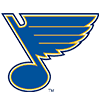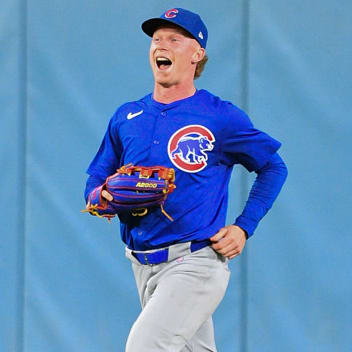I had the privilege of moderating a panel at the recent First Pitch Arizona Symposium. The title was, "Statistical Impacts of the 2023 MLB Rules Changes" with panelists Derek Carty (RotoGrinders), Jason Collette (RotoWire) and Eno Sarris (The Athletic). We landed on the following for topics:
- Shift legislation
- Pitch clock
- Larger base
- Pickoff attempt
- Balanced schedule
It's not appropriate to share everything here, but it's OK to point out earlier in the conference, Andy Andres (Baseball HQ and Datacaster for MLBAM) divulged some pitch clock data with the conclusion there may be an early adjustment period, but things would settle in and there would be no effect soon enough. Cool, good to know.
Derek presented some data on the shift. Again, I need to respect the proprietary nature of the content, but I can share my takeaways, especially since they corroborate the early work I've done on the subject.
Ultimately, there will be batters affected by shift legislation. The problem is deciding how to adjust projections and rankings. Looking at Statcast data and the like gets one in the neighborhood, but it isn't the final answer.
The biggest issue is while defensive positioning will be restricted, there is plenty of wriggle room within the rules to align defenses with infielders in non-standard spots. The main rule is two infielders need to be on either side of second base, with all four having their cleats in the infield dirt. The third baseman can still move over to the spot normally occupied
I had the privilege of moderating a panel at the recent First Pitch Arizona Symposium. The title was, "Statistical Impacts of the 2023 MLB Rules Changes" with panelists Derek Carty (RotoGrinders), Jason Collette (RotoWire) and Eno Sarris (The Athletic). We landed on the following for topics:
- Shift legislation
- Pitch clock
- Larger base
- Pickoff attempt
- Balanced schedule
It's not appropriate to share everything here, but it's OK to point out earlier in the conference, Andy Andres (Baseball HQ and Datacaster for MLBAM) divulged some pitch clock data with the conclusion there may be an early adjustment period, but things would settle in and there would be no effect soon enough. Cool, good to know.
Derek presented some data on the shift. Again, I need to respect the proprietary nature of the content, but I can share my takeaways, especially since they corroborate the early work I've done on the subject.
Ultimately, there will be batters affected by shift legislation. The problem is deciding how to adjust projections and rankings. Looking at Statcast data and the like gets one in the neighborhood, but it isn't the final answer.
The biggest issue is while defensive positioning will be restricted, there is plenty of wriggle room within the rules to align defenses with infielders in non-standard spots. The main rule is two infielders need to be on either side of second base, with all four having their cleats in the infield dirt. The third baseman can still move over to the spot normally occupied by the shortstop with the shortstop playing up the middle without crossing the imaginary line.
The biggest effect will be in the outfield, where the second baseman can't serve as a rover in short right field. That said, there are no restrictions on where outfielders can play and there are some mumblings about some daring teams sliding the left fielder to the other side of the diamond. Color me skeptical, but the overall point is clever teams will still be able to align their fielders to take away some base hits.
This feeds into one of the difficulties with using shift data to adjust projections. Some sources provide how many hits were saved or collected because of the shift. To do this, they must assume where the defenders would have been with the new rules, but no one really knows. A hit classified as being lost due to the shift may be assumed to become a hit under the current rules, but in fact it still would have been an out. Further, the pitch selection or batter's approach may not have been the same with different defensive positioning.
Another factor is there is intrinsic variance to batted ball data. That is, what may appear to be emanating from shifting may be happenstance. Much like fleshing out the variance with park factors, multiple seasons of post-shift data may be necessary to pinpoint how shifting influenced a hitter.
Oy vey, what a conundrum. Doing nothing feels lazy, but maladjustments could prove detrimental. I've already generated my initial 2023 projections to appease the wackos already drafting. Admittedly, I have not made any shift-related adjustments, but I plan on it once I can spend more time researching. As I'm sure you know, it's profiles and outlooks SZN, so that's where my focus currently lies. My guess is I'll focus on the extremes and not do much of anything to those in the middle.
Next up on the agenda was Jason with Stolen Base data. Here we have some leeway since it was included in a recent Collette Calls: Buckle Up. Cutting to the chase, the consensus is the new rules will promote more stolen bases. How many more?
Sigh.
Several of the impending changes feed into stolen bases. The distance between bases will be 4.5 inches shorter, which may not seem like much, but with instant replay, it will no doubt come into play.
Perhaps more influential is limiting pickoff (or step-offs) to two per batter. A pitcher can throw over a third time, but if the runner is safe, it's deemed a balk. This may not happen often, but when it does it will be a blast to watch. After a pitcher attempts two pickoffs, a cat-and-mouse game will ensue. The runner will extend his lead as much as possible, so it becomes a matter of which is more likely – a successful pickoff or the catcher throwing out the runner?
Shift legislation may tilt strategy more to small ball, which could also encourage more running.
Most everyone agreed there will be three groups of players. The first will not run regardless of the new rules. Let's call this class the "Zolas". At the other extreme are those needing no help, they'll run regardless, and the reduced distance is moot. These are the "Bertis". That leaves the middle bubble, those most likely to be aided by the rules. How many players does this encompass and what is the extent of the increase?
Double sigh.
As Jason demonstrated, there are numbers serving as a guide, but are they applicable? Yes, they point to an increase, but I'm not comfortable translating what happened in the minors to MLB, except considering the increase to be the maximum expected, but that's just speculation on my part.
The other factor is steals are in part influenced by managerial tendencies. While it's true the best managers adjust to the skills of their players, some impose their will onto the team. Ergo, just because a player fits the criteria of someone who will run more, he may not be afforded the green light.
Since treatment of this factor is mostly subjective, I've already incorporated it into my projections. I used what best can be described as a parabolic curve, having no effect at the edges, with a symmetric climb to the middle and corresponding descent. The scope was strictly empirical, with a high of three steals added to some players initially projected in the mid-20s.
One of the perils of an adjustment of this nature is round-off. For example, if 0.8 steals are added to a player initially with 23.6, they are still projected to swipe 24 bases. However, if 0.6 steals are added to someone with 27.3, their projection rounds to 28. That is, the player with a 0.8-steal adjustment rounds to the same amount as initially projected, but the player with a slightly lower adjustment picks up a steal. This speaks toward the flaws in projection and valuation theory, and thus why projections and the resultant earnings/rankings should not be treated as verbatim.
Eno handled the balanced schedule using specific examples of players performance in and out of the division, and how fewer divisional contests could affect their production. As a projectionist, I'm more concerned with a means to enact the differences globally, via clever Excel code.
By means of reminder, each team will now play divisional foes 14 times, down from 19. This accounts for 56 games. Every team will play the remaining teams within their league six times, totaling 60 more games. The remaining 46 contests come from playing a three-game interleague set with 14 cross-league clubs and a pair of two-game series against their geographical rival.
Determining the respective strength of each division will not be straightforward. Rosters will be different than last season, not to mention unsettled for much of the draft season. Complicating matters is a particular division may be assigned a specific rating, but each team within the division is not affected equally. On paper, AL Central pitchers benefited from 19 matchups against Detroit. (Well, everyone except Tigers hurlers.)
I envision a composite method of accounting for this discrepancy. Instead of rating each division, I'll come up with a strength rating for each team and the aggregate quality of opponent will be determined as a weighted average of who each team faces and the number of encounters. This is a fairly involved project, so it will have to wait until after I file my assigned site outlooks.
While this isn't exactly burying the lede, there is an elephant in the room requiring attention. It's something Fangraphs and RotoWire's Jeff Zimmerman has been trumpeting, and he did so during the panel. It's integral for those using a set of projections to understand how they were generated. Granted, this should always be the case, but since users may want to inject their own suppositions, they need to know what's already been incorporated.
If you take anything from this piece, it should be to make sure you know whether the projections include adjustments for the shift, steals and the balanced schedule. If so, get an idea of how they were affected so you can add your own twist and not double down on something already baked in.




































